So you’d like to plan a trip to Los Cabos, Mexico.
But before you get too jazzed about going, you want to know: Is it safe to travel to Cabo San Lucas?
The short answer, in our view, is “yes.”
As regular visitors to Cabo for the past 20+ years, we’ve never hesitated to go to Los Cabos and never experienced any safety concerns.
But for a more thoughtful answer – including crime, health and safety stats, plus tips to help you stay safe – read our guide to safety in Cabo San Lucas (and all of Los Cabos) below.

Contents: Is Cabo, Mexico, safe to visit?
Is Los Cabos safe re: Covid and disease?
Is it safe to travel to Cabo, Mexico? Cabo San Lucas travel warnings
Let’s start with advice from the very top – the U.S. State Department. Go here to see if there is any specific Cabo San Lucas travel advisory for the time you plan to travel.
You might also want to check the Canadian government’s Mexico travel advisory. Canada has a less complicated relationship with Mexico, so its Mexico travel warnings are sometimes not as harsh.
There are 4 levels of travel advisories issued by both the U.S. and Canada (and they’re roughly equivalent) for various places around the world:
- Level 1 – Exercise normal precautions
- Level 2 – Exercise increased caution
- Level 3 – Reconsider travel
- Level 4 – Do not travel
What you’ll find is that, in general, Los Cabos hovers in the Level 2 safety category – meaning “exercise increased caution.” (Sometimes the U.S. warning is Level 3.)
The Los Cabos area (aka “Cabo”) includes the resort towns of Cabo San Lucas and San Jose del Cabo, along with the Tourist Corridor (the 20-mile stretch of coastline connecting the two towns).
How should you interpret the “Level 2” flag?
To put things in perspective, some other Level 2 travel destinations (according to the U.S. State Department) include the United Kingdom, Italy, Spain and Belgium.
But you probably wouldn’t be scared to travel to Belgium right now, would you?
What about Italy? Would its Level 2 advisory scare you away from all that scrumptious pizza and pasta in Italy?

Cabo San Lucas crime
Thousands upon thousands of visitors flock to Cabo each month to soak up the sun, watch whales, golf, party at rockin’ beach clubs and generally have an epic time.
According to the Ministry of Tourism of the Government of Mexico (SECTUR), an average of 350,000 tourists visited Cabo each month between January and July, 2022.
Most visitors to Cabo are American. (A whopping 98% of all visitors to Cabo between January and July, 2022, came from the United States.)
Pretty well everyone who visits Cabo enjoys their vacation without incident (except maybe for the occasional sunburn and hangover from the wickedly good Mexican margaritas).
Sure, you’ll hear reports of petty crime – pickpocketing, credit card fraud and the like. But these types of incidents aren’t unique to Cabo and can happen anywhere you travel.
Your chances of being robbed or mugged in Cabo are actually miniscule. Any violent crime that does occur is usually related to drug trafficking.
Not only that, but exit surveys reveal that tourists feel safe too when visiting Cabo.
We’ve never felt unsafe in Cabo.
Mind you, we don’t really do anything outside of the tourist areas.



Avoid dodgy areas. (See our post on the best areas to stay in Los Cabos.)
Keep to downtown Cabo San Lucas (including the Cabo San Lucas Marina), Medano Beach, the resort areas on the Pacific Side of Cabo San Lucas, Pedregal, the Tourist Corridor and San Jose del Cabo, and you’re not likely to run into any problems.
If you’d like more information, the U.S. Department of State’s Overseas Security Advisory Council is a good source for keeping tabs on criminal activity in Mexico and specific regions.
Is Los Cabos safe from drug cartels?
No doubt you’re aware of Mexico’s drug cartel problems.
Bear in mind, however, that most of the drug violence occurs in towns close to the Mexican/U.S. border, like Ciudad Juarez (just south of El Paso, Texas) and Tijuana. Mazatlan in Sinaloa state was also affected in early January, 2023.
Ciudad Juarez is in the state of Chihuahua. It’s more than 600 miles away from Cabo, as the crow flies.
Tijuana is in the state of Baja California (the northern half of the Baja California Peninsula).
Cabo is in the state of Baja California Sur (the southern half of the peninsula).
As a tourist, the risk of encountering drug-related violence in Baja California Sur is very low.
Cabo San Lucas murders
If you were to Google the Cabo San Lucas murder rate, you might choke on your tequila. You’ll find reports saying that Los Cabos has one of the highest murder rates per capita in the world.
However, these are older reports from more than a couple of years ago.
Overall, the state of Baja California Sur had the second fewest number of murders of any state in Mexico in 2021.
And Los Cabos is no longer on the 2022 list of most dangerous cities in the world by murder rate per capita.
What you will find on that top 50 list, however, are some cities in the U.S. For example, St. Louis shows up, with 60.59 murders per population of 100,000. Baltimore is also on the list, with 50.52 murders per 100,000 people.
Of course, you need to do your own risk assessment about Mexican safety and whether travel to Cabo San Lucas is safe crime-wise.
But when it comes to the question “Is Los Cabos dangerous for tourists?” we wouldn’t be surprised if you came to the same conclusion as us – Cabo is very safe for tourists who visit tourist areas.
Is Cabo San Lucas safe at night?
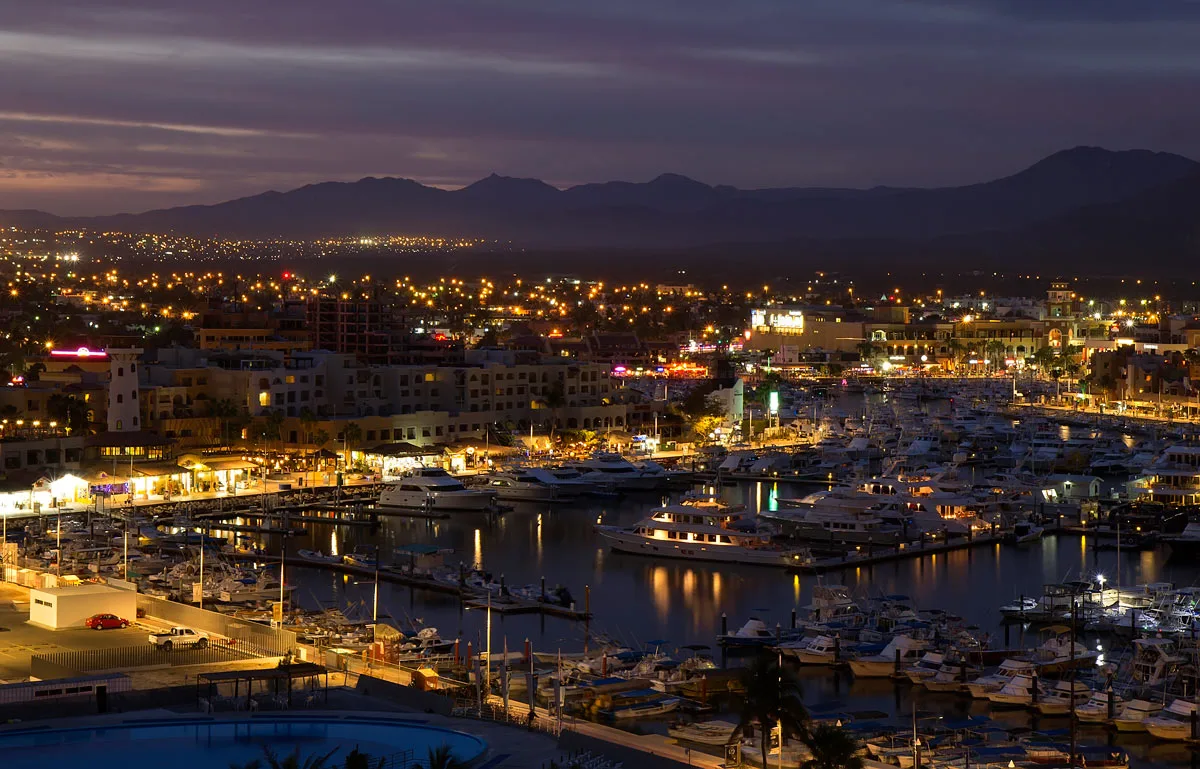
Generally speaking, Cabo is safe at night. That is, as long as you use common sense like not wandering down dark alleys or taking drinks from strangers.
But you should exercise a few safety precautions at all times, particularly if you’re having two or more cocktails while enjoying the nightlife.
Be aware of how much you’re drinking. Never leave your drink (alcoholic or otherwise) unattended. And if you have to walk outside of the main tourist areas to get back to your hotel, take a taxi.
How safe is Cabo for driving?
As for getting around in Los Cabos, we don’t like to drive on the main highways outside of Cabo at night. If we’ve rented a car for a day trip to Todos Santos or La Paz, we like to return before it’s dark.
The reason is not because we’re afraid of getting car-jacked or kidnapped.
We’re more afraid of the cows! They’re known to wander out on the roads at night. And they’re a serious car accident hazard.

We also don’t like driving after dark during Christmas and on New Year’s Eve. There are too many partiers out on the roads, and drinking and driving spells trouble.
The same is true for driving early in the morning on New Year’s Day. Both locals and visitors are known to still have alcohol in their bloodstream – and to still be inebriated.
Is Cabo safe re: Covid and diseases?
Cabo no longer has any travel restrictions like it did during the pandemic.
You don’t have to be vaccinated against Covid-19 or provide a negative test to enter Mexico. If you feel like you’re coming down with something, Covid tests are readily available at most hotels and are typically free for you to take.
Depending on your age and circumstances, you’ll want to be up-to-date on all your routine vaccines (including Flu, Hepatitis A and Covid) when traveling to Cabo or anywhere else in the world.
See the CDC’s recommended vaccines, guidelines and safety notices for travel health in Mexico.
Food safety in Cabo San Lucas

Is it safe to drink the water in Cabo?
The safest answer here would be “no.”
Not all the water is bad, but it’s impossible to know for sure if the water you’re drinking is safe.
The water supply in Cabo is provided mainly by aquifers in the Sierra de La Laguna mountain range and by desalination plants. It’s mostly pure and clean.
The problem comes from the pipes that the water runs through.
Many of the pipes are old or in disrepair. Pollutants can easily contaminate the water before it reaches the tap in your hotel or condo.
The good news is that filtered water is readily available throughout Cabo.
Restaurants and resorts generally use purified water for making ice for your drinks.
They may offer purified water for drinking, but you can also opt for bottled water or sparkling water to pair with your meal.
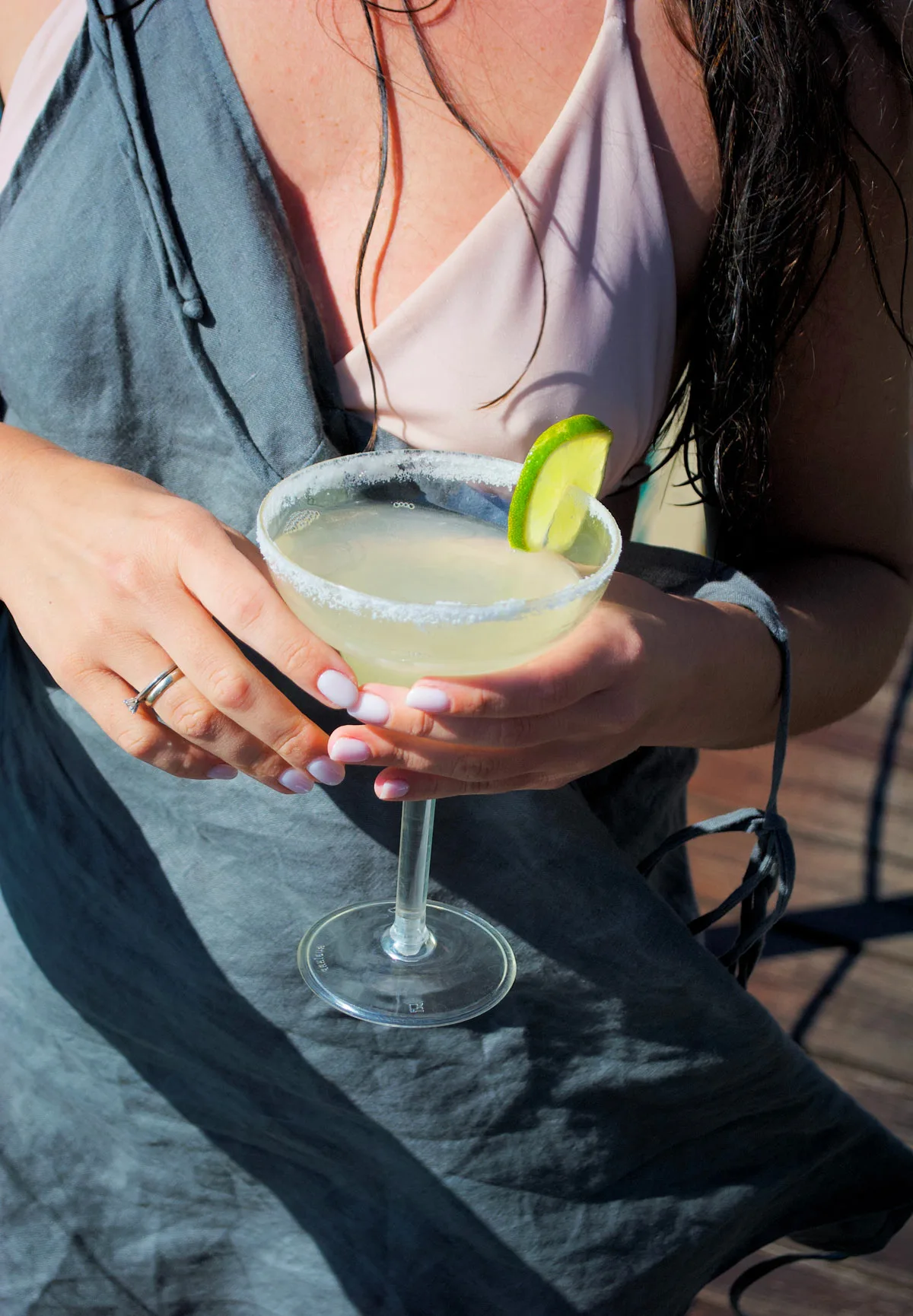
Is it safe to eat raw fruit and salads in Cabo?
Diving into the local cuisine – like trying the delicious shrimp and fish tacos in Cabo – is part of the fun! This includes eating the local fresh fruits and vegetables.
Eating fruits in Mexico is an amazing way to try some local exotic fruits that are as fresh as can be.
Fruits that have a thick peel (like bananas) or rind (like oranges) that you remove are absolutely safe to eat. But we’ve also had no tummy issues eating fresh apples or grapes that we’ve bought at the grocery store.
As well, we’ve never had a problem ordering fresh salads when eating out.
When cooking or eating in, we wash our purchased produce with boiled (then cooled) water or bottled water.
If you have stomach sensitivities or want to play it totally safe, you could stick to eating just cooked vegetables (no salad) when dining in restaurants.
Beach safety in Los Cabos
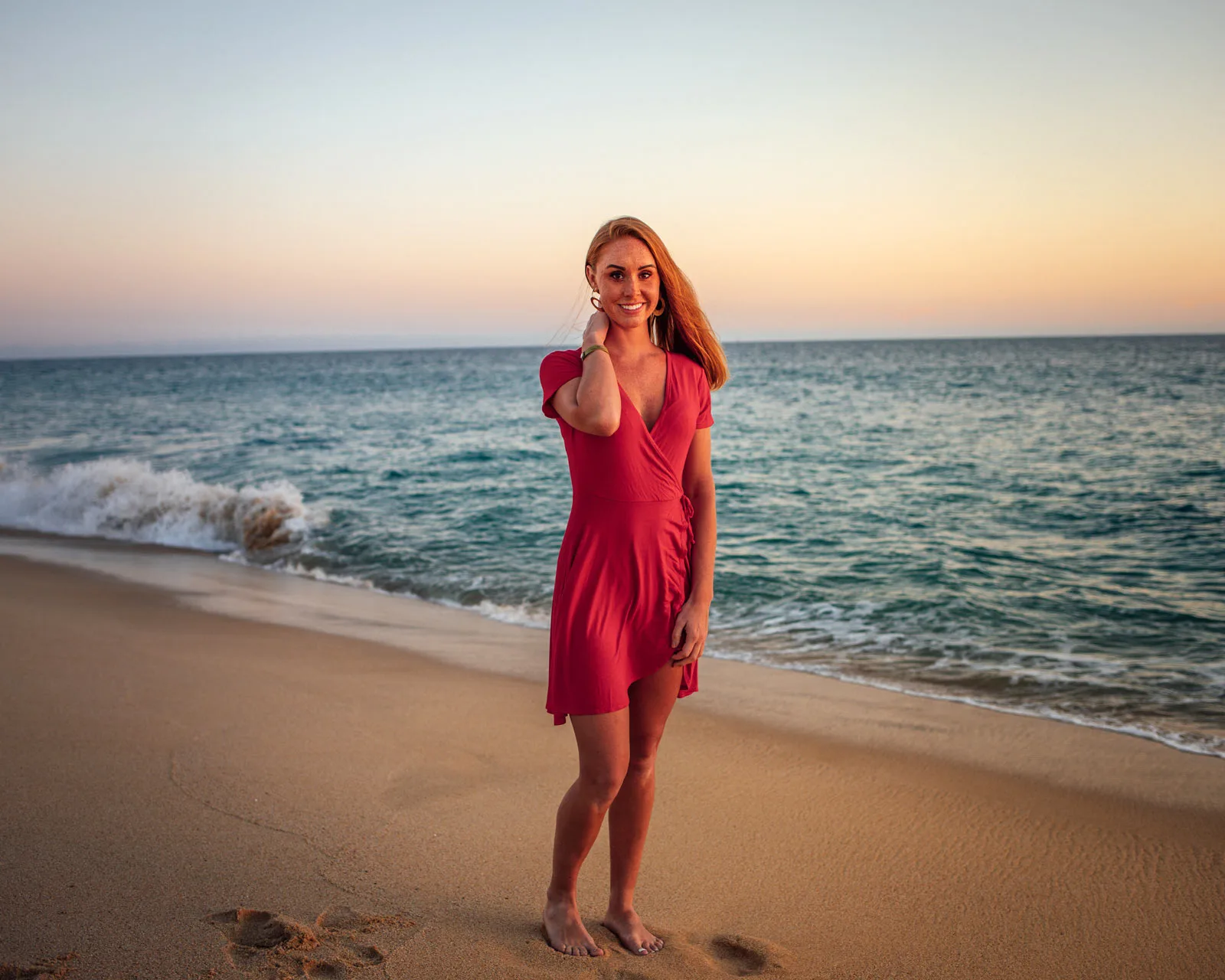
Los Cabos is known for its beautiful beaches. But not all of them are safe and swimmable.
You can’t swim on many of the beaches due to dangerous rip tides and rogue waves. Be sure you know which are the safe swimming beaches in Cabo before you put your toes in!
(And if you want to swim in the sea at your resort, be sure to book Cabo accommodation on a swimmable beach.)
Here are some steps you can take to make your beach time as safe as possible.
Learn the colored flag system
Many beaches use a colored flag system to update beach-goers on how the current conditions are for swimming safety.
Flag colors range from black, red, yellow and green.
Black is the most dangerous and green is safe.
Blue flags may also be used to indicate safe swimming conditions and really clean water
Look for a lifeguard on duty
Not all beaches have a lifeguard on duty, but some will for an extra layer of safety.
Watch the waves
Rogue waves sometimes wash up on the beach and have been known to sweep people out to sea.
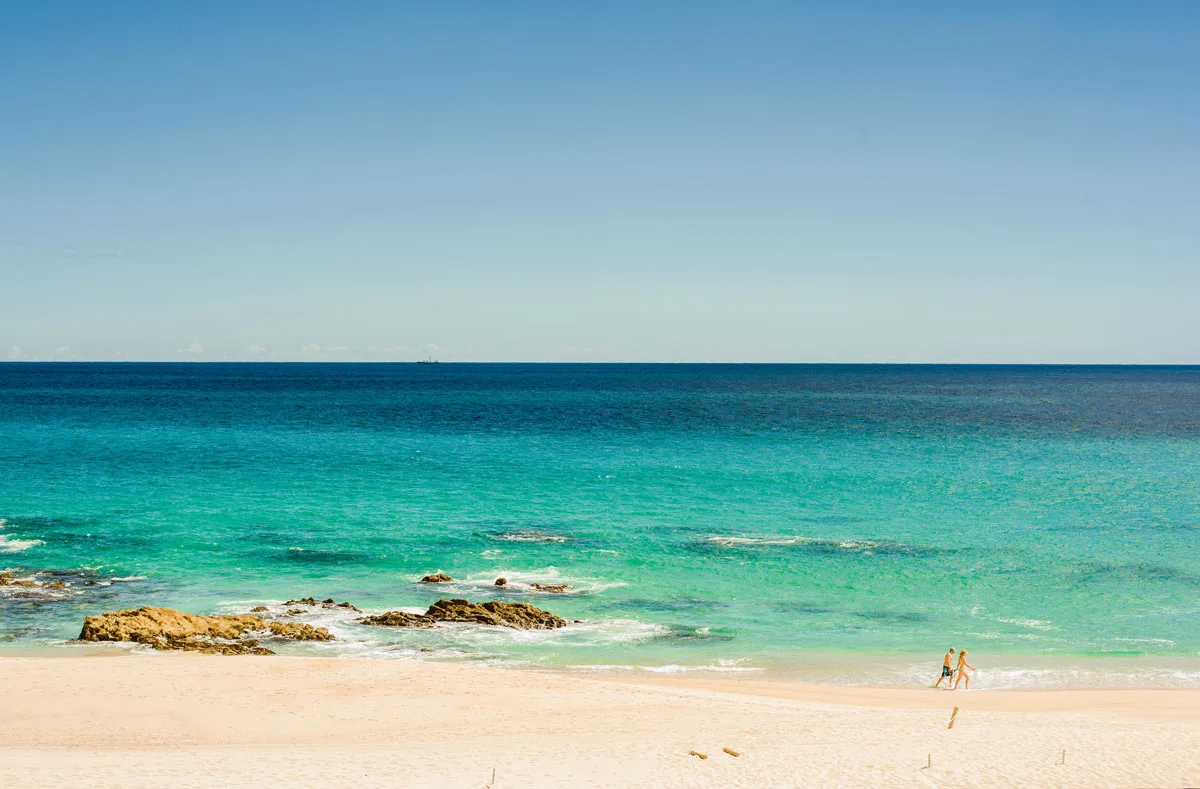
Be sure to look for any posted warning signs on the beach to alert for these. And when walking along the beach, always keep an eye on the waves.
Protect against sunburn
Don’t be a lobster!
The sun burns hotter in Mexico than it does in more northern climates. Be sure to wear sunscreen (and re-apply often) and wear protective clothing like rash guards, hats and sunglasses.
Stay hydrated
It’s easy to get caught up in the fun of being out in the sun and surf – and to forget about drinking some water.
Make sure you’re taking plenty of water breaks to prevent dehydration.
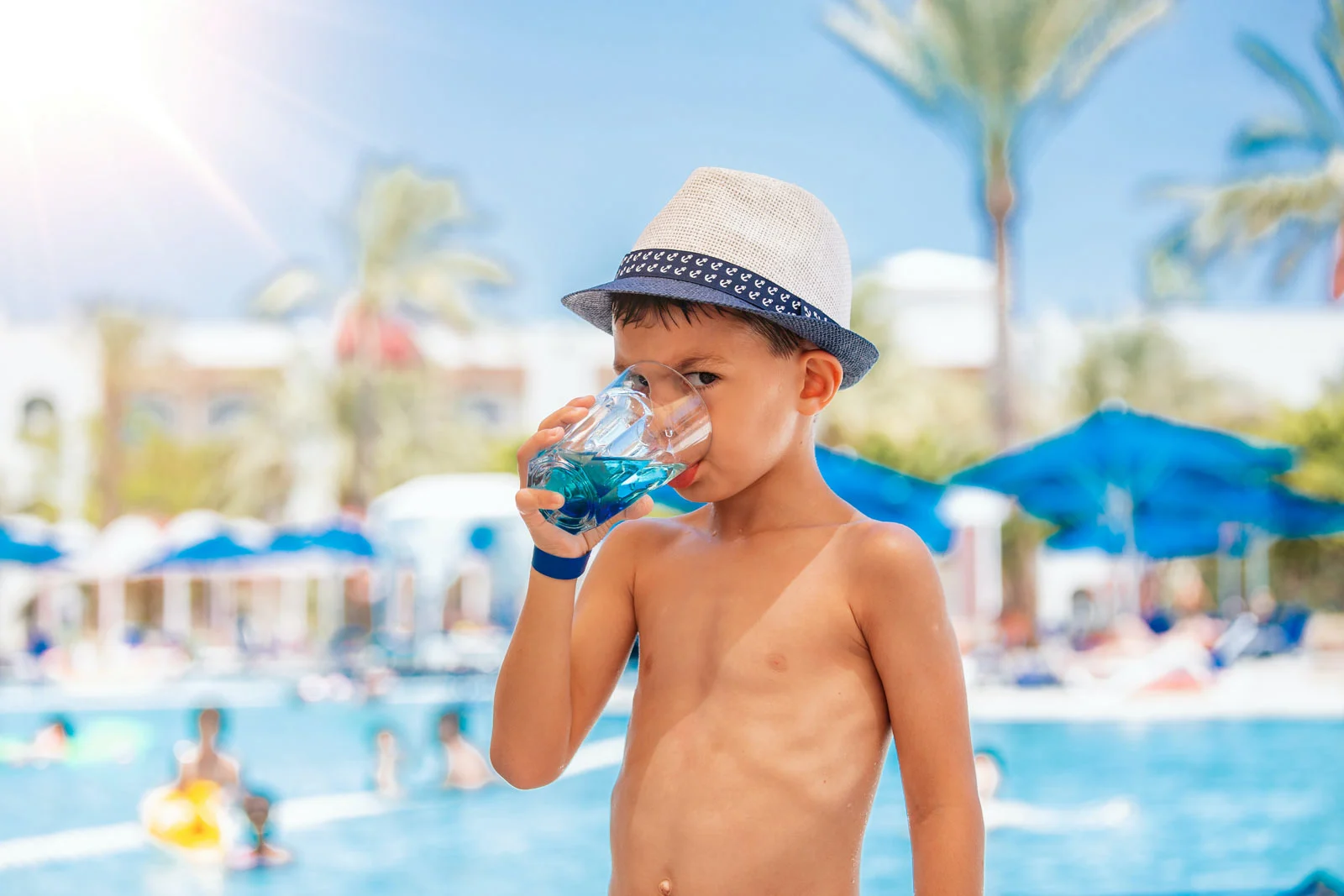
Other Cabo San Lucas safety tips
1) Get travel insurance
Whether you’re an adventurous traveler or a more chill and relaxed visitor, travel insurance coverage is a must-have whenever you’re traveling.
Insurance is available not only for canceled flights and lost luggage, but also for your medical expenses if you end up getting sick on your trip.
See what insurance your credit card offers.
Also check out SafetyWing. If you travel often to Cabo, it may work for you, as their insurance is designed for frequent travelers (as well as digital nomads).
2) Leave valuables at home
As to the risk of getting mugged, you really don’t have to worry too much about flashing your new diamond engagement ring around at most resorts and tourist restaurants.
But like anywhere else you may travel, things happen. And valuables can be accidentally lost or stolen if left unattended.
So if not’s on your person all the time, why not leave the expensive bling at home?
If you have heirloom jewelry that’s impossible to replace, save yourself the headache of worrying about it and keep it safe at home.

We leave things like laptops, iPads, GoPros, cameras and the like out and about in our rooms when we go to the pool (or out of the resort).
Nothing has been stolen yet.
But we should be more conscious about putting them away out of obvious view. (Just a sensible precaution wherever you travel.)
3) Take group tours
Exploring what there is to do is part of the fun!
Traveling with a group adds strength in numbers and will make it harder to be the victim of a crime.
Try some of our favorite group tours, like:
- This kayaking tour to Lover’s Beach and the Arch
- One of Cabo’s best sunset cruises
- This taco tasting tour
- This tequila tasting tour
4) Keep a copy of your passport separate from the originals
Your passport is your ticket back home, quite literally.
It’s best to put it in your room safe (along with your other valuables like jewelry).
Make sure to keep a copy in a separate safe place, so that if something happens to the original, you’ll still have access to the copy. It can help when it comes time to getting a replacement passport.
5) Don’t walk alone at night
While the tourist areas of Cabo are safe, it’s still important to exercise caution and use your noggin.
Walking alone at night in any city can make you more susceptible to crime. It’s preferable to travel with at least one other person at night. Take a taxi if you need to get somewhere by yourself.
6) Be extra careful when drinking
Alcohol lowers your inhibitions and decreases your awareness of your surroundings.
Enjoy that margarita and Mexican beer, but do so with caution, especially if you’re outside your resort.
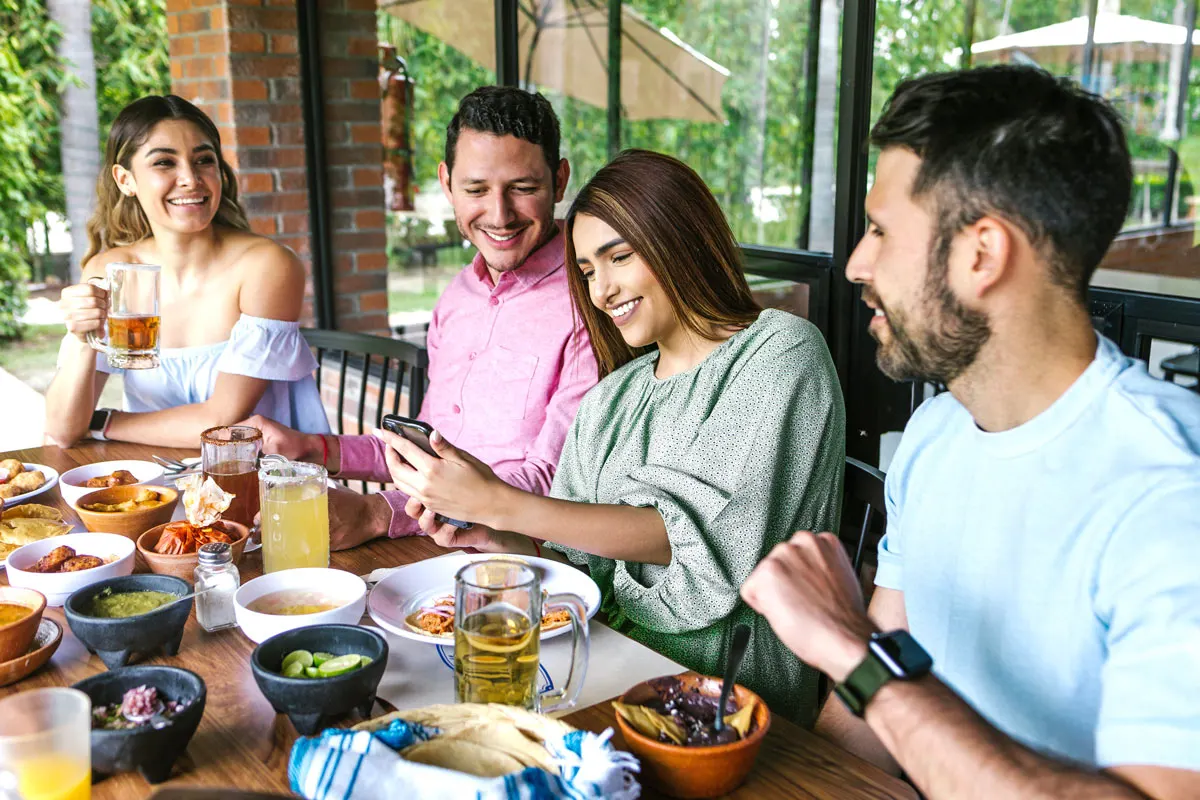
Know your limits and never accept a drink from a stranger.
Avoid setting your drink down for long, and if you’re worried someone could have tampered with your drink, ask for a new one.
7) Use bug spray to prevent mosquito bites and tropical diseases
We rarely have a problem with mosquitoes in Cabo.
When it comes to Cabo safety measures, we confess that we don’t use bug spray, except when going out for things like ziplining or hiking in the countryside.
But be aware there’s a remote possibility of contracting the Zika virus or Dengue fever from mosquitoes in the area.
Last words on “Is it safe to travel to Cabo San Lucas?”

We love traveling to Cabo San Lucas, Mexico, and have always felt safe in the resort and tourist areas of this region.
Sure, there are some potential safety concerns regarding crime (although much lower than in other parts of the country), driving and the overall health and safety of visiting, eating and exploring the area.
But if you use common sense, chances are you’ll have a safe and wonderful vacation. We even bet you’ll be hankering to return to this beautiful region of Mexico as soon as you can!
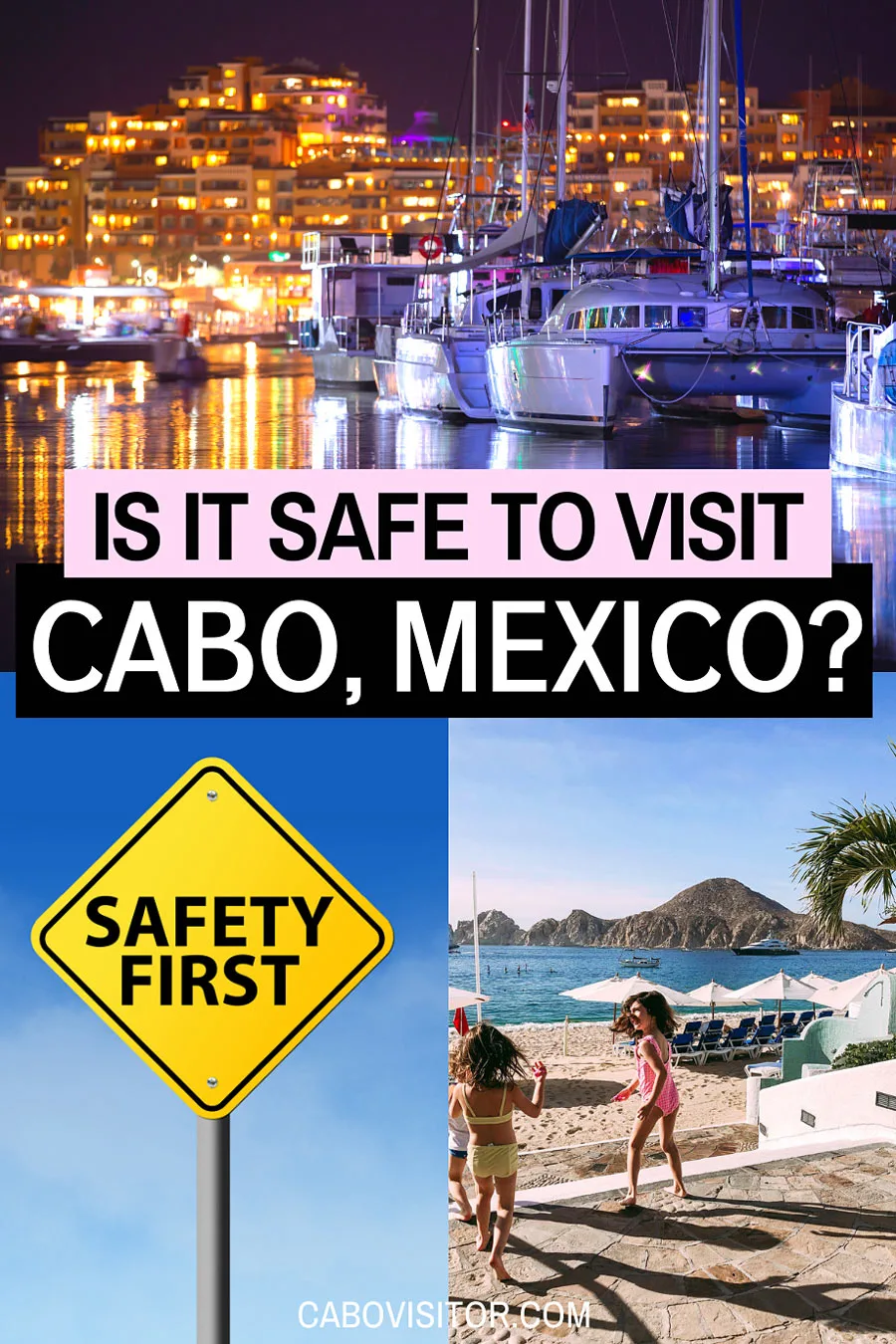
Discover more of Los Cabos!
- What’s an ideal itinerary for visiting Cabo? (For 3 days? 5 days? A week?)
- What’s it like to visit Los Cabos in February?
- Check out the top things to do in Cabo on a cruise!
Planning your trip to Cabo?
Here are our favorite travel resources:
Resorts: Booking.com is great for scoring a “wow” hotel in Cabo – or at least a decent one. (We especially like their flexible cancellation policy!)
Vacation homes, condos and rentals: We prefer and use Vrbo (Vacation Rentals by Owner).
Tours: For the best local guided tours in Cabo, see Viator and GetYourGuide.
Car rental: Renting a car in Los Cabos is one of the best ways to explore. Discover Cars searches car rental companies so you get the best rates.
Travel insurance: SafetyWing is designed for frequent travelers, long-term adventurers and digital nomads. It covers medical expenses, lost checked luggage, trip interruption and more.
Need more help planning your trip? Check out our ultimate Cabo travel guide! It’s packed with crazy useful trip planning info.
Pssst! If you make a booking or purchase through our site, we may earn a small commission (at no cost to you). Thanks!
Photos: 2 to 5, 15 © Janice and George Mucalov, Cabo Visitor
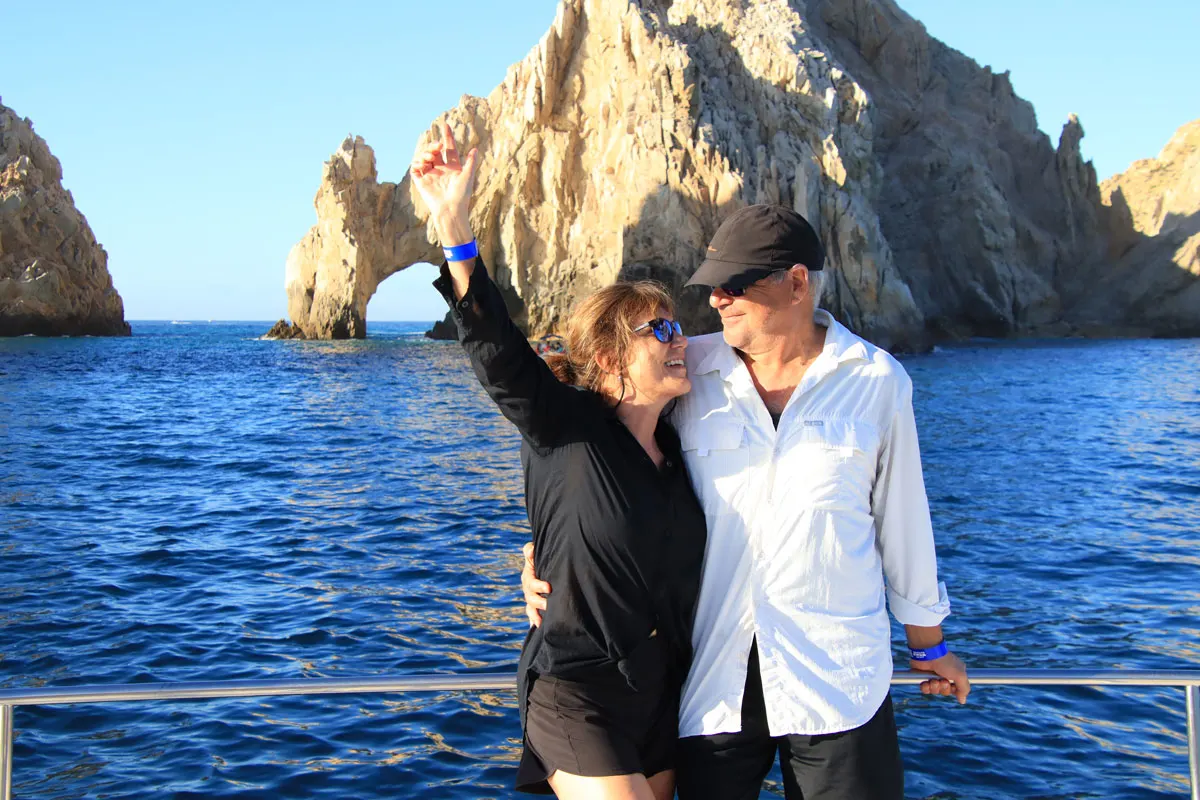
About the authors
Award-winning travel writers Janice and George Mucalov are frequent visitors to Los Cabos. Here on Cabo Visitor, they share their essential tips for discovering the best of Cabo!
